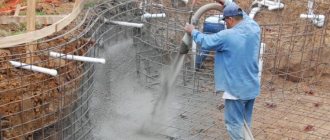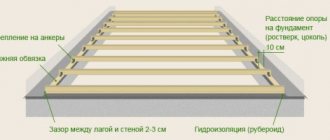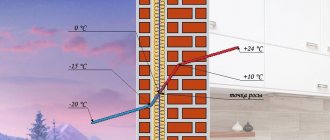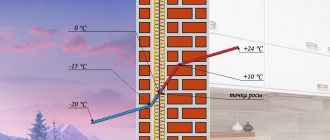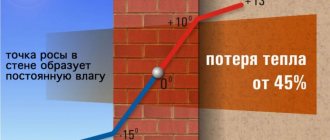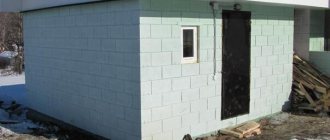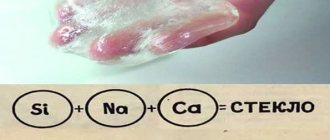One of the most important concepts in construction is dew point. At the stage of wall insulation, this allows you to correctly select the type and thickness of the heat-insulating material and create an optimal microclimate inside the building. There are several ways to determine the dew point. However, you also need to know what to do with the results obtained.
What is dew point
The dew point is a certain limit of air temperature, below which the vapor contained in the air becomes saturated and turns into liquid.
The dew point is the place where cold air meets warm air, and the place where their interaction forms liquid in the form of condensation. Using the example of building structures, the dew point appears in the form of condensation on the windows. Always, when it gets cold outside, we see fogging and water droplets forming on previously dry window panes. This is the closest and most harmless manifestation of the dew point.
condensation on the window
In nature, the dew point appears in the form of drops of morning dew on plant leaves and other objects. It is formed as a result of the interaction of cold night air and warm morning air heated by the sun's rays.
manifestation of dew point condensation in nature
In the case of heated premises, the dew point is created artificially at any time of the day, under conditions of temperature below zero outside.
It is a completely different matter if the formation of such dew point condensation is detected on the inside of the wall of the house. Even a not very experienced builder will be concerned about the formation of excess liquid in a previously dry room. Since the consequences of such accumulations of moisture can be the most unfavorable. But the interior wall of a house is not the only destructive place where incorrect calculation of the dew point or its absence can manifest itself.
Incorrect calculation and location of the dew point for a home is the number one destructive enemy in construction. Which, from the inside, slowly but surely destroys any strong structure.
Articles on the topic
Staircase in a brick house - types, features of the foundation, instructions, advice from masons
Shrinkage of a brick house - why it happens, consequences, instructions, advice from masons
Switching from brick to sandwich - installation, pros and cons, instructions, advice from masons
Service life of a brick house and how it can be increased?, instructions, advice from masons
Wooden floors in a brick house - types, how to install, instructions, advice from masons
How to brick a window opening - options, instructions, advice from masons
How to make a roof on a brick house - varieties, strengthening, instructions, advice from masons
Brick columns for joists - preparation, how to make them, instructions, advice from masons
Reviews ()
Where should the dew point be?
The ideal place for the dew point to occur in a wall is the insulation located on the outside of the wall. The thickness of the insulation on the wall should be such that in the coldest time condensation does not move into the wall itself, or if it does, it will not be for a long time.
dew point in insulation
For the destructive consequences of the dew point being in the body of a load-bearing wall, see the article below.
Walls based on porous materials, such as foam and gas blocks, shell rock and similar materials, require a larger layer of insulation, since they absorb and retain moisture well. That is, even a short-term (several days) presence of dew point in a porous wall can have a destructive effect on the internal integrity. Therefore, so-called warm materials for masonry walls can only be effective in certain regions, with not the most frosty winters.
If, according to calculations, the dew point will periodically move into the wall of the house itself or there is a high probability of such a shift, then this fact should be taken into account when choosing material for laying walls. For such cases, wall materials with high density are well suited and can withstand a large number of freezing and thawing cycles without damage. With a high frost resistance coefficient. Such frost-resistant materials include brick and expanded clay concrete.
frost resistance indicators of the most common wall materials
Consequences of incorrect calculations
When choosing materials for insulation, remember that one of the effective ways to protect external walls from moisture is to correctly arrange the layers of insulation.
High-quality thermal insulation will help to significantly reduce heat loss and maintain comfort in the house, as well as extend the life of the walls
A dense layer that will not allow steam to pass through should be placed on the inside of the load-bearing wall, and a porous layer that allows moisture to pass through should be placed on the outside.
It is also necessary to create conditions for ventilation at the condensation point. In this case, the condensate will evaporate without obstacles.
A properly insulated external wall will help reduce heat loss during the heating season from 45 to 95% and create comfort in the house
If the insulation was chosen incorrectly, then moisture will accumulate in it gradually and the thermal resistance number of the wall will decrease. Therefore, in the second, or maximum in the fifth, heating season, heating costs will increase, if this is a private house, the apartment will simply be much colder in winter.
Professional insulation is a long and expensive process. Today there are many materials for insulation. Do not try to save on them, as cheap materials will become unusable after a few heating seasons and begin to deteriorate.
There are several consequences of incorrect calculations, but some of them can negatively affect the quality of life. The main consequence will be constantly wet walls, as a result of fungus, mold, microbes on the walls, which entails the appearance of many chronic diseases.
Constantly wet walls become a breeding ground for the growth of fungus and mold, because their spores fly in the air and can cause illness
Since a damp room is difficult to heat, the comfort level drops. And high humidity inside such walls can cause respiratory diseases.
Another unpleasant consequence of incorrect calculations is the destruction of finishing materials - tiles crumble, bricks on the external wall crumble, and inside the room the surface on the walls will begin to swell.
Undried condensation is the key reason for swelling and delamination of finishing materials on the external wall
To correct the situation, you should contact specialists to analyze the condition of the walls and insulation. With the correct calculations, you can correct all mistakes and create comfortable and warm conditions in your home.
The following article will introduce you to the rules and formulas for conducting thermal engineering calculations for competent house design, which we highly recommend reading.
Dew point calculation online calculator
There are many online programs on the Internet - calculators, with which you can calculate the approximate location of the dew point in the wall. The program calculates the dew point based on a number of indicators that must be entered manually. This is information about the material from which it is planned to build the wall, the number of layers of the wall and their thickness, the air temperature inside and outside the building, air humidity. The online calculator is convenient for calculations. Together with digital calculations, you can see diagrams and graphs of the dew point movement depending on changes in air temperature. However, the calculation results for many calculators differ and how accurate the calculations are is unknown.
online calculator for determining dew point
Areas of application
There are many areas that take this temperature into account. One of the areas is aviation. During aircraft operation, condensation may form on some of its parts and freeze. This leads to freezing of the engine, metal structures of the flying vehicle and its breakdown.
In forestry, fire conservationists use dew point to calculate fire hazard class.
Experts calculate the likelihood of forest fires and develop protective measures.
Most often, determining the point is necessary in construction and agriculture.
Video: Dew point - insulating the house wisely
Construction
In construction, this value is determined when insulating the facades of buildings and private buildings. If you do not take into account the indicator or calculate it incorrectly, due to settling moisture, the wall finishing material will deteriorate or pathogenic flora and mold will appear.
Agriculture
In agriculture, experts determine the likelihood of damage to crops due to weather conditions, knowing the point and atmospheric humidity.
When cultivating new plants, breeders try to create varieties that condense moisture on the vegetative parts. Such plantings can exist with little precipitation.
Calculation of dew point using the device
The dew point can also be determined in real time using a special TV. This is an electronic device with a monitor that will display information about indoor humidity, air temperature and dew point. Such devices are relevant for measuring the dew point for an already erected and completed building structure. This device will not help in designing the thickness of walls and buildings.
dew point thermal imager
How to calculate the thickness of insulation?
The required insulation thickness is calculated taking into account the parameter under consideration in three ways:
Using special summary tables, and they will be different for each region. Using a calculation formula that includes many complex parameters. Using a special calculator, which many manufacturers of thermal insulation materials offer on their websites. In conclusion, I would like to remind you that it is advisable to calculate the dew formation temperature (TD) not only relative to the insulation, but also to the layer of decorative finishing.
Very good videos about dew point, there you will find answers to all questions on this topic.
Damage to dew point for house walls
We figured out that the dew point can be located in three different parts of the wall:
- in external wall insulation
- in the wall, closer to the outside
- in the wall, closer to the inside
In each of the listed places, the dew point will manifest itself differently. If in one place it is harmless, then inside the house or in the wall it will have certain destructive consequences on the integrity of the wall. Below, we will analyze the behavior of the dew point in each of the listed places.
Dew point in external insulation
This is the most harmless dew point for your home. In this case:
- When the dew point occurs, condensation forms directly in the insulation itself.
- The insulation is not hygroscopic, therefore moisture is not retained in the wall structure and evaporates when the air temperature changes.
- Due to the vapor barrier properties of the insulation, the moisture that is formed when condensation evaporates goes outside and does not interact with the wall of the house.
- The walls of the house are dry throughout the year, both from the outside and from the inside
- The walls retain their strength and integrity for many decades
insulation on the outside
Dew point in the wall of the house, closer to the outside
- The behavior of a wall largely depends on the material from which it is made. Walls made of dense and heavy building materials such as brick, expanded clay concrete, stone, and wood can withstand dew point better. Because they are less susceptible to destruction and have a higher frost resistance coefficient.
- The walls of houses built from porous materials that absorb moisture well and allow steam to pass through. Such as foam blocks, gas blocks and similar materials, the effect of the dew point should be minimally short.
destruction of a wall due to moisture
- When condensation occurs inside the wall, the wall material becomes saturated with liquid. When the air temperature subsequently drops below zero, the accumulated liquid freezes and increases in volume. An increase in the volume of liquid destroys any wall material from the inside. This leads to the formation of both small and large cracks in the wall structure. The walls crumble and finally lose their strength.
- If the wall, in which the dew point is inside and is insulated from the outside, then the insulation will not prevent the accumulated moisture from escaping outside. Therefore, all the liquid will accumulate on the surface, between the insulation and the wall. This entails the formation of mold and mildew, with all the ensuing consequences that are harmful both to the building and to human health.
- If the wall of the house is not insulated from the outside, then the liquid will come out as the air temperature rises, but this will not protect the wall from internal destruction after the water freezes. We can observe similar evaporation of liquid from a damp wall in the form of a white coating on brick walls.
release of moisture from a brick wall in the form of a white coating
Dew point in the wall of the house, closer to the inner surface
It occurs when steam passes through the middle of the wall thickness and condensation begins to form closer to the surface of the wall, which is located inside the house.
Consequences of dew point for the interior decoration of the house:
- The masonry, saturated with moisture, begins to release liquid in the form of water droplets on the inner wall and into the house.
- A wet wall surface destroys the interior decoration of the room: putty, wallpaper and other finishing materials.
- Mold and mildew form on the walls and in the corners, which will be very difficult to get rid of.
- An unpleasant, shabby smell of decomposition appears in the house, which is harmful to health.
- The overall heat temperature in the house decreases.
mold on the wall inside the house
The most destructive and harmful consequences for the house is when the dew point is closer to the inner surface of the wall.
Dew point is an important parameter that should be taken into account when designing and constructing walls, roofs and the construction of the entire house. Failure to comply with it can lead to irreversible and critical consequences for the entire building.
Options for location of problem areas
The dew point tends to shift, but most often there are three zones of its location:
- Closer to the outer surface of the wall. This option occurs if the wall is not insulated. The appearance of a problem area is also possible if the external insulation is of insufficient thickness.
- Closer to the inner surface of the wall. In the absence of insulation, condensation easily forms in this place during cold weather. Internal insulation shifts the area of condensation formation to the area between the wall surface and the insulation. With external insulation, this phenomenon rarely occurs if all calculations were performed correctly.
- In the thickness of the insulation. For external thermal insulation this is the best option. With internal insulation, there is a high risk of mold appearing in the room and, as a result, disruption of the microclimate.
Note! The formation of condensation in the wall is affected not only by the temperature and humidity conditions from the street and the room. The determining factors are also the thickness of the structure, the thermal conductivity coefficient of the materials used
What material is used for finishing floors?
As we have already found out, external thermal insulation allows you to achieve a better effect compared to internal one. In addition, such insulation protects the building from negative environmental changes and mechanical damage, which makes it durable. However, in order to reliably insulate walls, it is necessary to choose the right insulation material.
Despite the fact that there are different air temperatures outside and inside the house, the same insulation options are used in both cases. However, the following requirements apply to materials for external insulation:
- resistance to shrinkage and damage;
- durability;
- resistance to sunlight;
- ease of installation.
Examples of insulation of concrete and brick walls
For buildings made of wood, the ability of the material to transmit steam is of great importance, because such floors must “breathe”. According to the rules, it is assumed that the insulation will be used for a long time, and replacing it every few years will be impractical. Therefore, it is important to choose the right façade layer.
Table No. 1. Types of insulation for walls
| Title, illustration | Characteristic |
| Mineral wool is made from the finest fibers, which are obtained after glass is melted. According to the location of these fibers, the structure of the material differs (layered, corrugated), it has different thicknesses. Moreover, each subtype of mineral wool is characterized by individual characteristics: 1. Glass wool. Due to the content of limestone and various chemical components, the material is resistant to high temperatures (up to 480 degrees). 2. Stone wool. It is made from fibers of various rocks, therefore it has a high density, which is why it can withstand heating up to 580 degrees. 3. Slag wool. Produced from waste from the metallurgical industry. It is heat resistant up to 280 degrees and is also waterproof. This material can be found on sale in both slabs and rolls with various coatings (paper, foil, aluminum). The positive qualities of this material include: 1. It has a structure with small fibers, which promotes normal air circulation and the passage of steam. Therefore, practically no condensation forms on the surface. 2. The mineral base makes the material resistant to fire, which is also additional protection. 3. The material has better resistance to humidity. Therefore, the risk of dampness entering the room is reduced. 4. Mineral wool allows you to achieve sound insulation of the room. 5. Various microorganisms and insects do not settle in this synthetic material. Among the disadvantages, it is noted that mineral wool shrinks over time and becomes deformed with constant contact with moisture. In addition, it is problematic to install, due to the fact that glass particles get on the skin and cause irritation. |
| Insulation based on this material allows you to achieve optimal thermal insulation due to its characteristic cellular structure. The slabs practically do not absorb moisture, which means they are suitable for finishing any objects. Some advantages of expanded polystyrene should be noted: 1. The slabs have minimal weight, which greatly facilitates the installation process, so even an inexperienced craftsman can handle this process. In addition, such a layer does not overload the floors. 2. This synthetic material does not develop mold because it is not exposed to microorganisms. 3. If the installation rules are followed, the service life of the material is about fifty years. 4. This material is resistant to aggressive alkali and other chemicals. 5. During the installation process, workers do not have to use special protective equipment for their hands and face, as when working with mineral wool. Among the disadvantages of the material, it should be noted: 1. Expanded polystyrene does not allow steam to pass through, which means it cannot be used if there is a timber structure. 2. The material is destroyed when exposed to certain oily substances and ultraviolet rays. 3. The material is inferior in noise insulation properties to previous insulation materials. 4. When heated, it releases toxins that are hazardous to health, and in the event of a fire, their quantity increases significantly. |
| Otherwise, cellulose insulation is also commonly called ecowool; it is made from paper industry waste. It turns out that 85% of the composition is cellulose fibers, and the remaining 15% are antiseptic components. This material is placed in all empty holes, resulting in durable insulation. It can be mounted either dry or with the addition of glue. With dry installation, craftsmen quickly cope with the process, and then proceed to other finishing work. However, such insulation will not be entirely reliable, therefore, by adding glue, the resistance of the insulation to any aggressive influence increases. This means that the second option will be preferable due to its high performance. The main advantages of the material: - safety from an environmental point of view; — excellent thermal insulation and noise insulation; — fire resistance; - budget cost. Among the negative aspects, the possibility of shrinkage during long-term use should be noted. |
Prices for mineral wool
Minvata
Video - Calculation of insulation thickness
Comfortable values for a person
For most people, conditions with a point value in the range of +10…+15℃ are optimal. If the indicator increases, then the person feels discomfort. When the point value is less than +10℃, the environment becomes dry, and from +15℃ humidity begins to be felt. If the indicator is above +20℃, it becomes stuffy. People with heart and respiratory problems are more susceptible to environmental parameters than others.
The dew point temperature determines the comfort level of living in the house
